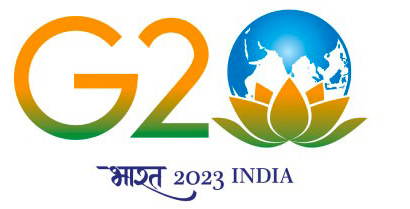As governments around the world continue to spend in response to a series of shocks, public debt is rising dangerously. How can it be reduced?
Lessons from past crises
After the global financial crisis (GFC) of the late 2000s, G20 orchestrated a coordinated fiscal stimulus, which is more effective since part of one country’s fiscal stimulus leaks to others as its imports rise.
But there is a fundamental asymmetry since the US can print dollars to finance deficits, advanced economies (AEs) could borrow at low rates, but emerging markets (EMs) were left to face rating downgrades, outflows under global risk-offs and high borrowing costs that followed high debt, alone.
India was vulnerable with high double deficits. The government had been borrowing since the seventies’ oil shocks and for consumption since the eighties. Despite waves of reforms, the burden of interest payments and subsidies meant revenue deficits kept rising until the high growth period of the 2000s. But the GFC stimulus undid all the improvement. Delayed correction was less effective because of falling growth. The pandemic caused a peak largely because of negative growth, but this time it was reversed the very next year.
Expected debt paths
The International Monetary Fund (IMF)2023 spring meet gave expected paths for debt ratios. The US ratio is expected to rise again to its 2020 peak of 134 of gross domestic product (GDP) by 2027, China’s will also keep rising to above 100, other countries will fall 2-5 per cent, keeping global public debt constant at about 100 per cent of GDP, with AEs well above EMs and low income countries (LICs). But continuing high debt keeps risks elevated.
India: The debt ratio has already fallen 5 per cent in two years from 89.2 to 84.2. The IMF projects it to be constant now till 2027. But after the lessons of the GFC, Indian policy has successfully avoided excess. Balance between demand and supply-side, countercyclical smoothing, good coordination between monetary and fiscal policy and continuing reforms (BCCR) will reduce volatility and keep real rates smoothly below growth rates—a combination that lowers debt ratios. Even as short rates rise, 10-year G-Sec yields are rising less as spreads fall. But a share of interest payments in revenue of 40 per cent gives strong incentives to reduce debt. There is gradual fiscal consolidation, with stimulus from a larger share of spending on growth positive infrastructure.
Balance between demand and supply-side, countercyclical smoothing, good coordination between monetary and fiscal policy and continuing reforms (BCCR) will reduce volatility and keep real rates smoothly below growth rates—a combination that lowers debt ratios.
United States: The US faces several dilemmas. Too much fiscal stimulus was given in the pandemic time ignoring supply constraints (using US dollar dominance to fund generous income support). With high debt, it is dangerous to fund redistribution with deficits—it must be tax financed. When inflation rose as a consequence, monetary policy started late but over-reacted. Reducing inflation to preserve the dollar value was thought necessary to maintain its dominance. But rate changes have to be data dependent and give time for lagged effects to work. Sharp changes create excess volatility in capital flows and in exchange rates for all countries, which reduce confidence in the dollar. They also expose hidden financial risks. Prudential regulation can counter monetary policy induced financial sector distortions. It cannot be tightened in a crisis, however. It is best used ex ante. But no such regulation was imposed for non-bank financial institutions in the US, while it was lightened for small banks.
Rising interest rates are also a problem for government debt. US public debt more than doubled from 55.7 per cent in 2002Q1 to 126.1 per cent of GDP in 2021Q1 post-pandemic, but interest payments remained about 1.5 per cent of GDP because interest rates were so low. But USG 10 year rates that were 1 per cent pre-pandemic, reached 4.25 in Oct 2022. The peak reached was 15.4 per cent in 1981. As a result interest payments rose to 3.16 per cent of GDP in 1991Q1. The unacceptable 25 per cent of revenue receipts going as debt service in the 1980s led to Budget Enforcement Act caps on spending, and PAYGO systems so that a new scheme could only be started if there was funding for it. In addition, as Alan Greenspan reduced rates to support fiscal tightening, debt came down in the Bill Clinton years (it had risen with the opposite combination under Fed Chairman Paul Volcker).
The current view is real rates will stay low, but this is not certain—and would not be good for the dollar if it is due to inflation, since nominal rates adjust to inflation. The much higher debt can raise interest payments fast if rates rise. They will also rise if EMs begin reducing dollar assets holdings. No other currency is as strong, but payment innovations, allowing netting at central banks, as well as geopolitics can reduce use of the dollar. As a rule-based democracy, the US is very important for global stability. To retain its dominance, reduce negative spillovers to others and to itself, however, it is necessary to avoid monetary-fiscal policy extremes, respect rules and shun unilateralism. More competition will hopefully impose discipline that may improve policy and reduce US debt.
Borrowers themselves prefer to repay multilateral banks since it keeps loan rates low and other loans are priced off multilateral loans.
LICs and EMs: IMF-World Bank estimates 15-60 per cent of LICs are in or approaching debt distress. EM sovereign bonds yields have gone up from about 5 per cent to about 8 per cent; the cost of borrowing for 25 per cent of highly indebted EMs is very high. But the G20 2020 common framework for debt reduction has not proved effective.
For debt restructuring to work, it has to be generous; but since the share of private creditors and bilateral lending is large, the Paris club of AE lenders is now no longer dominant, making agreement difficult. The Chinese are insisting the Bretton Woods institutions must also take a haircut. One way around this may be to extend the haircut exemption to regional development banks as well, conditional on all of them using capital more effectively to expand loans. Borrowers themselves prefer to repay multilateral banks since it keeps loan rates low and other loans are priced off multilateral loans.
Mandating private participation in credit databases and preventing asset seizures under restructuring can also help. Climate related collective action debt clauses can reduce holdup. Generous climate finance, which is a public good, can also reduce EM fiscal stress. High cost of EM financing is largely driven by currency risk that often does not materialize. Innovative long-term currency hedges based on portfolio insurance and reinsurance or central bank swaps, that leverage country data with the IMF to reduce credit costs, can be developed.
This commentary originally appeaed in Business Standard.




